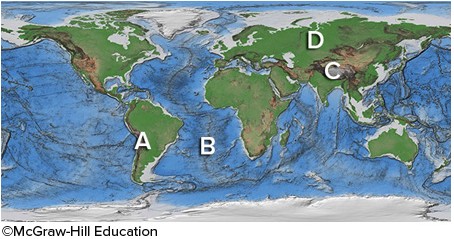Water masses have distinct and often unique characteristics. What are the five common water masses in temperate and tropical latitudes?
The ocean is density stratified, with the densest water near the seafloor and the least dense near the surface. Each water mass has specific temperature and salinity characteristics and do not mix easily. Density stratification is most pronounced at temperate and tropical latitudes because the temperature difference between surface water and deep water is greater there than near the poles. Water masses can be remarkably persistent and will retain their identity for great distances and long periods of time. Oceanographers name water masses according to their relative position. There are five common water masses: surface water (to a depth of about 200 meters), central water (to the bottom of the main thermocline), intermediate water (to about 1,500 meters), deep water (below intermediate and above bottom waters to about 4,000 meters), and bottom water (water in contact with the seafloor). Surface currents move in relatively warm upper environment of surface and central water and can be warmer and less saline. They may have formed in warm areas where precipitation exceeds evaporation. The relatively cold water masses lying beneath the thermocline exhibit smaller variations in salinity and temperature than the water in the currents that move across the ocean's surface. Water masses at intermediate depths are intermediate in density. The densest (and deepest) masses were formed by surface conditions that caused the water to become very cold and salty.?
You might also like to view...
Transform faults are areas of crustal
A. formation. B. subduction. C. accommodation and plate movement. D. destruction.
What has caused the Aral Sea to shrink dramatically over the past 40 years?
A) global climate change B) water diversions in streams feeding the sea C) excessive growth of shoreline plants due to excessive agricultural fertilizer runoff D) extremely high evaporation rates
According to EPA requirements for new landfills, leachate from the landfill must be
A) collected by a drainage system that intercepts percolation and treats it as necessary. B) collected into pools at the edge of the landfill where it can evaporate. C) absorbed by materials such as paper products added as the landfill is formed. D) contained within the landfill using a system of plastic liners that prevent its escape.
Which area(s) on this world map is (are) likely to have volcanoes above sea level?
A. A B. B C. C D. D